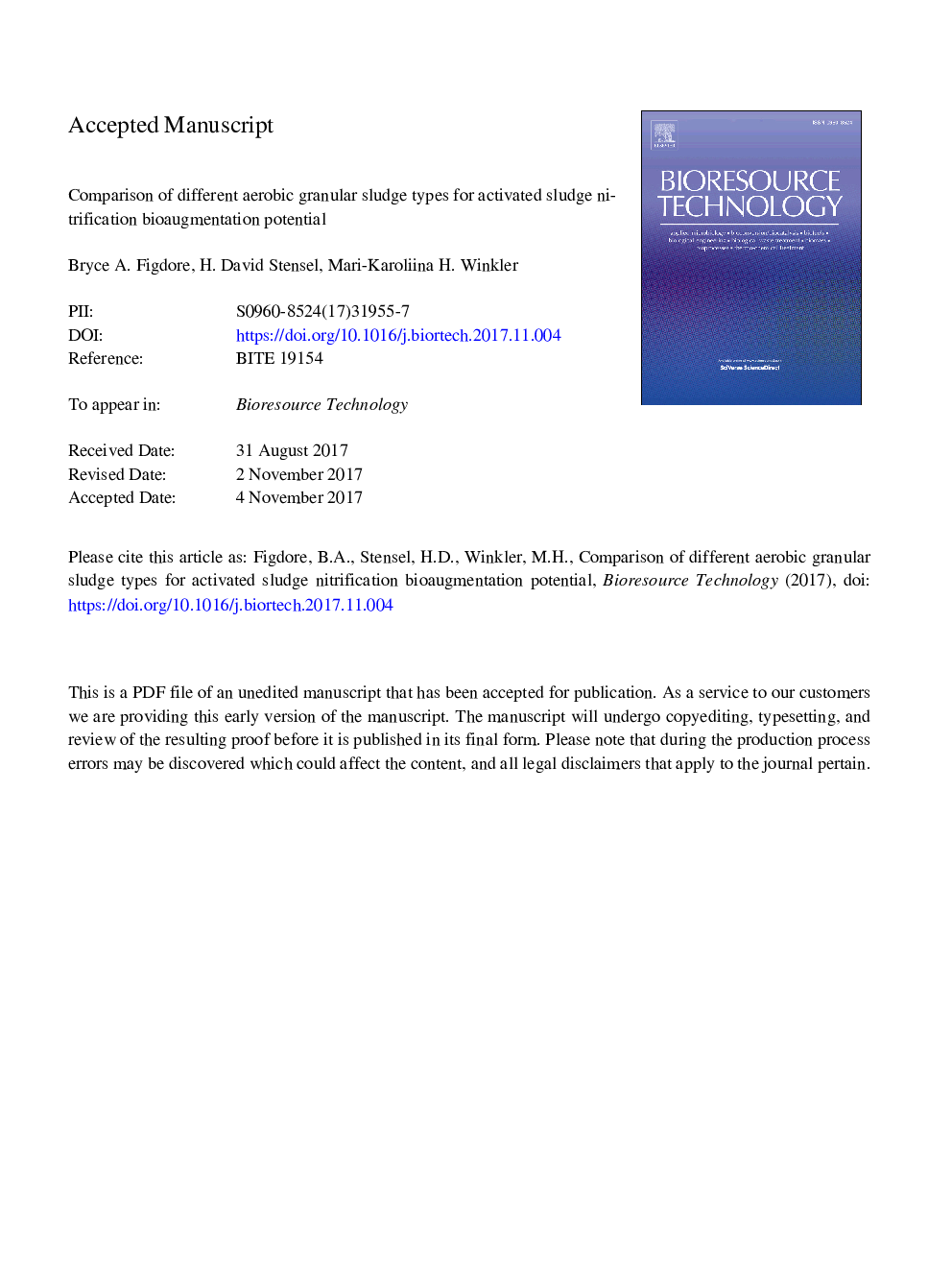| Article ID | Journal | Published Year | Pages | File Type |
|---|---|---|---|---|
| 7068470 | Bioresource Technology | 2018 | 35 Pages |
Abstract
Three types of nitrifying granules were grown on media simulating anaerobic digestion dewatering reject water and compared for their potential to increase nitrification capacity when added to mainstream flocculent activated sludge treatment. An advantage of nitrification bioaugmentation with sidestream granules instead of flocculent biomass is that the granules can be selectively maintained at longer retention times than flocs and thus provide higher nitrification capacity from bioaugmentation. The three granule types and feeding conditions were: nitrifying granules with aerobic feeding, nitrifying-denitrifying granules with anoxic feeding, and nitrifying-denitrifying/phosphate-accumulating (NDN-PAO) granules with anaerobic feeding. NDN-PAO granular sludge showed the highest potential for nitrification bioaugmentation due to its better treatment performance, granule physical characteristics, and much greater production of granular mass and nitrification capacity. Dechloromonas-associated organisms were dominant in these granules; Candidatus Accumulibacter-related organisms were also present. Nitrosomonas was the dominant ammonia-oxidizing bacteria, while Candidatus Nitrotoga was an abundant nitrite-oxidizer in all granule types.
Related Topics
Physical Sciences and Engineering
Chemical Engineering
Process Chemistry and Technology
Authors
Bryce A. Figdore, H. David Stensel, Mari-Karoliina H. Winkler,
